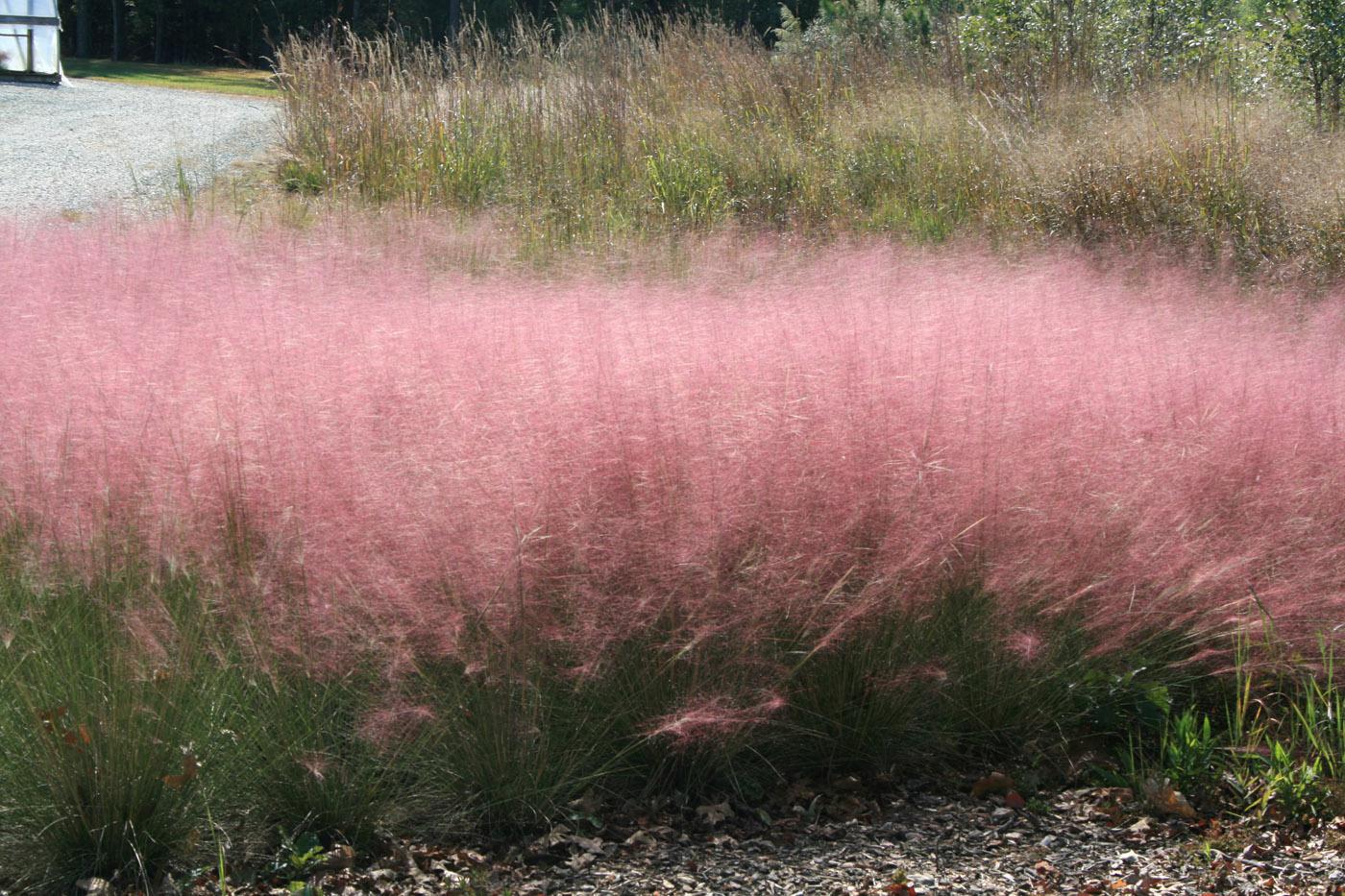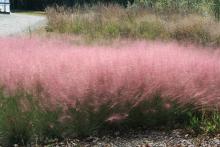Information Possibly Outdated
The information presented on this page was originally released on December 19, 2011. It may not be outdated, but please search our site for more current information. If you plan to quote or reference this information in a publication, please check with the Extension specialist or author before proceeding.
Ornamental grasses have winter appeal
I saw one of the most beautiful sights the other morning just as the sun came up. Ornamental grasses, backlit by the sun, seemed to glow in the rich morning light.
I realized at that moment that landscape grasses can have a significant impact in winter gardens.
Most gardeners already know that ornamental grasses are fantastic garden plants, but we tend to take them for granted because they perform so consistently. We just expect them to do their job and be beautiful, and we don’t give them much thought. That ought to change.
Gulf muhly grass is a native grass that performs well in the winter months. The grass flowers in billowy masses that resemble pink clouds, and the color holds until there is a hard freeze. The flower heads keep their airy shape even after a freeze.
Most garden centers will lump together gulf muhly grass and related species with similar landscape performance. But it really does not matter what they are called. Muhly grass should be in your landscape.
Pampas grass is one of my absolute favorite fall plants, and it really commands attention. This perennial grass with wiry, serrated leaves is definitely not shy, with flower heads that can shoot 10 feet tall. The arching foliage has a variable greelor.
If you don’t have enough room for plants that grow this big, consider a dwarf selection called Pumila. This selection grows only 6 feet tall, so it is a dwarf compared to other common forms of pampas grass.
This is an easy-care plant that thrives in hot, full sun in landscape beds. The flower heads are extremely dense, and the stalks, held in tight groupings, persist through the winter months for landscape interest.
Give ornamental grasses some attention in the spring so they look their best in the winter. Prune them back to at least 6 inches from the ground before growth begins in the spring. This gives new foliage room to grow and expand. Apply a good, slow-release fertilizer at pruning to help the new foliage.
While ornamental grasses are considered good choices for drought-tolerant gardening, they grow best with consistent soil moisture. Apply supplemental water during periods of extended dry weather, such as we have seen in Mississippi in recent years.
There are many more types of ornamental grasses than those I have written about here. Visit your local garden center or nursery to see what they have to offer, and consider planting ornamental grasses so you can enjoy them in your landscape next summer and winter.








